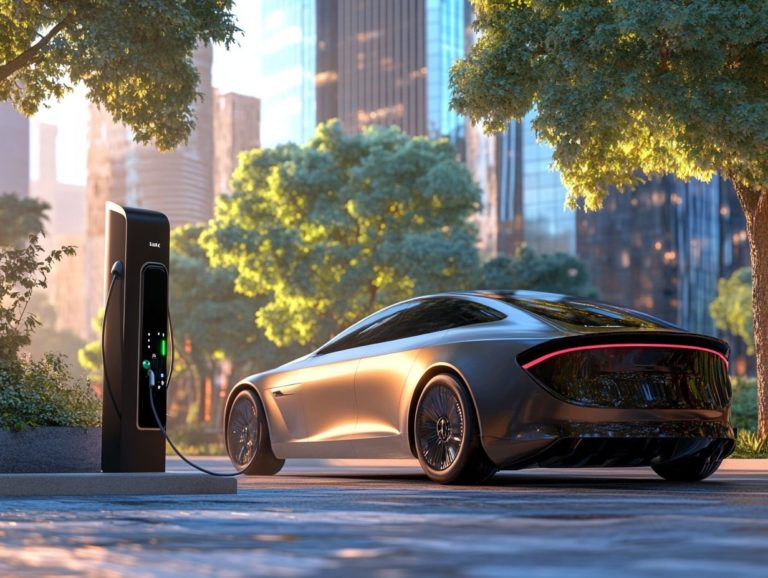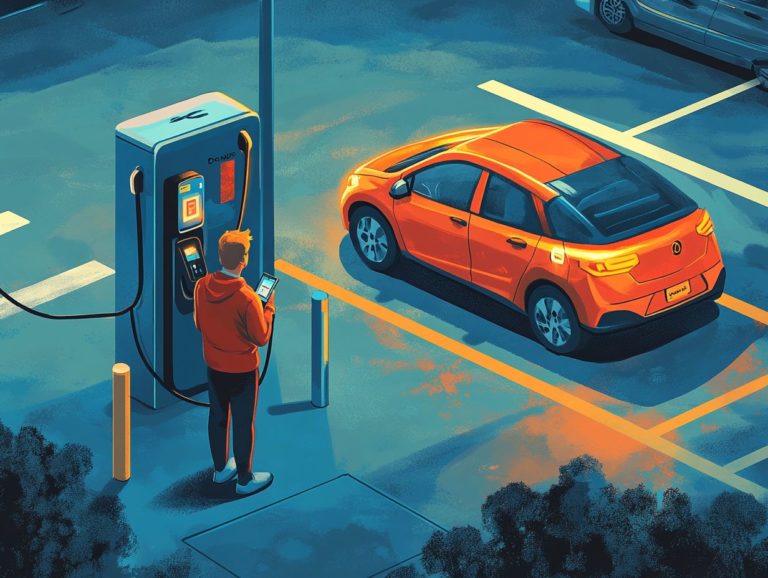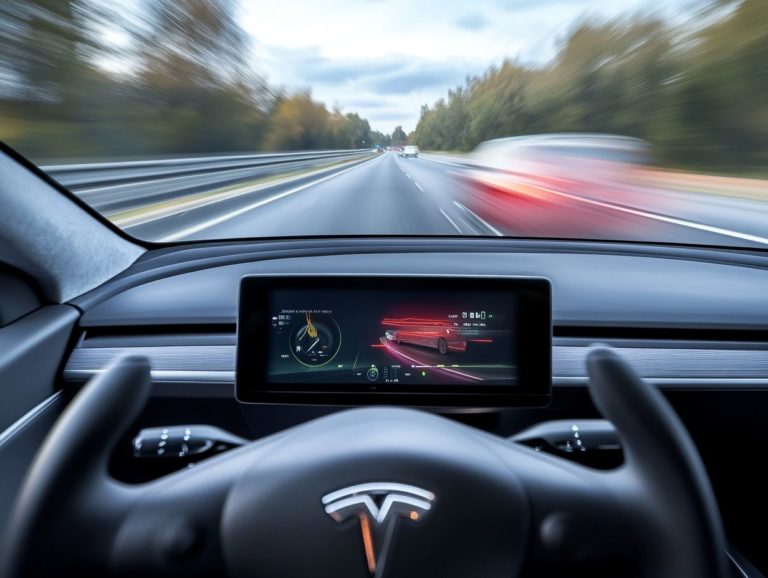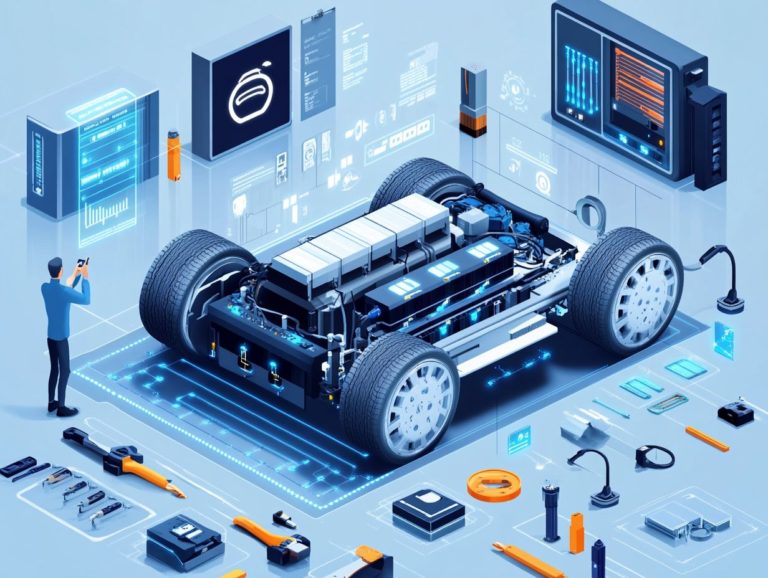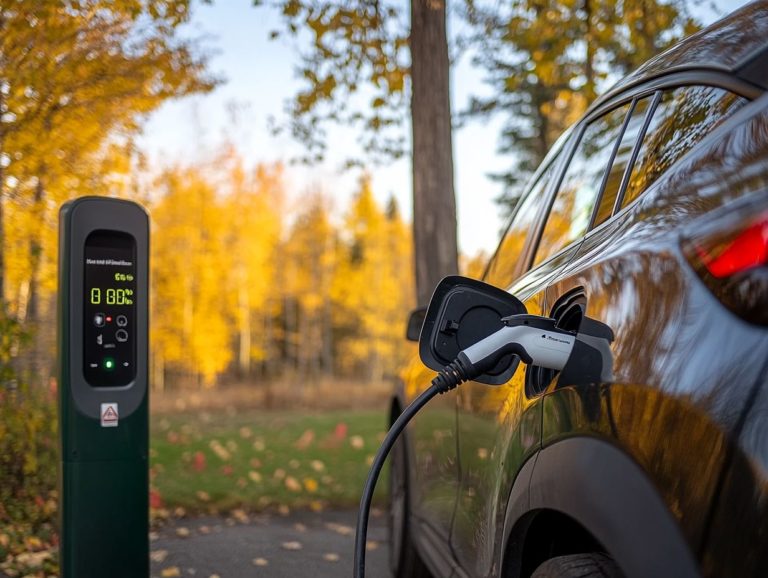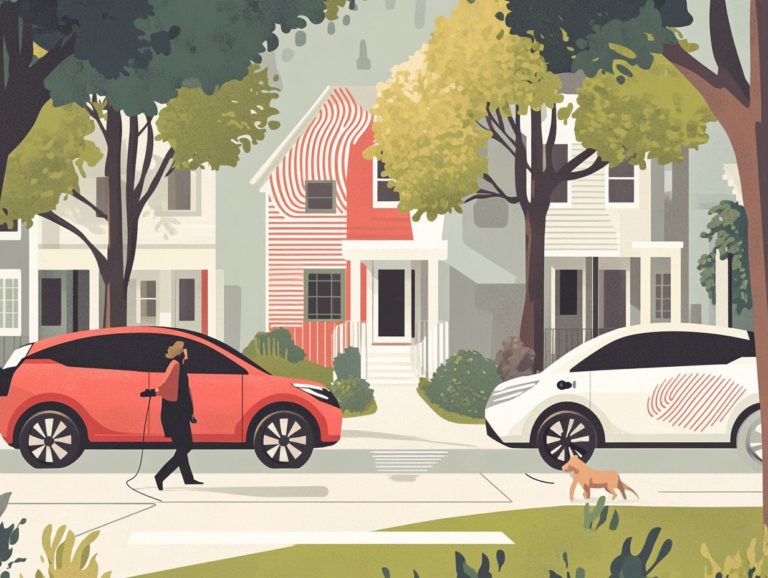How Are EVs Contributing to Smart Cities?
As urban areas evolve, the integration of electric vehicles (EVs) emerges as a cornerstone of smart city initiatives. With a focus on sustainability, efficiency, and an elevated quality of life, these cities leverage the potential of EVs to cut emissions and enhance transportation systems. This article delves into the myriad benefits that EVs offer to smart cities, the challenges encountered during implementation, and compelling case studies showcasing successful integration. Join us in discovering how electric vehicles will shape the future of urban life!
Contents
- Key Takeaways:
- How Electric Vehicles Transform Smart Cities
- Why EVs Are Key to Smart Cities Success
- Challenges and Solutions for Implementing EVs in Smart Cities
- Examples of EVs in Smart Cities
- The Future of EVs in Smart Cities
- Frequently Asked Questions
- How are EVs contributing to smart cities?
- What role do EVs play in reducing air pollution in smart cities?
- How do EVs help in decreasing traffic congestion in smart cities?
- Are EVs cost-effective for smart cities?
- What is the impact of EVs on the power grid in smart cities?
- How do EVs promote sustainable transportation in smart cities?
Key Takeaways:
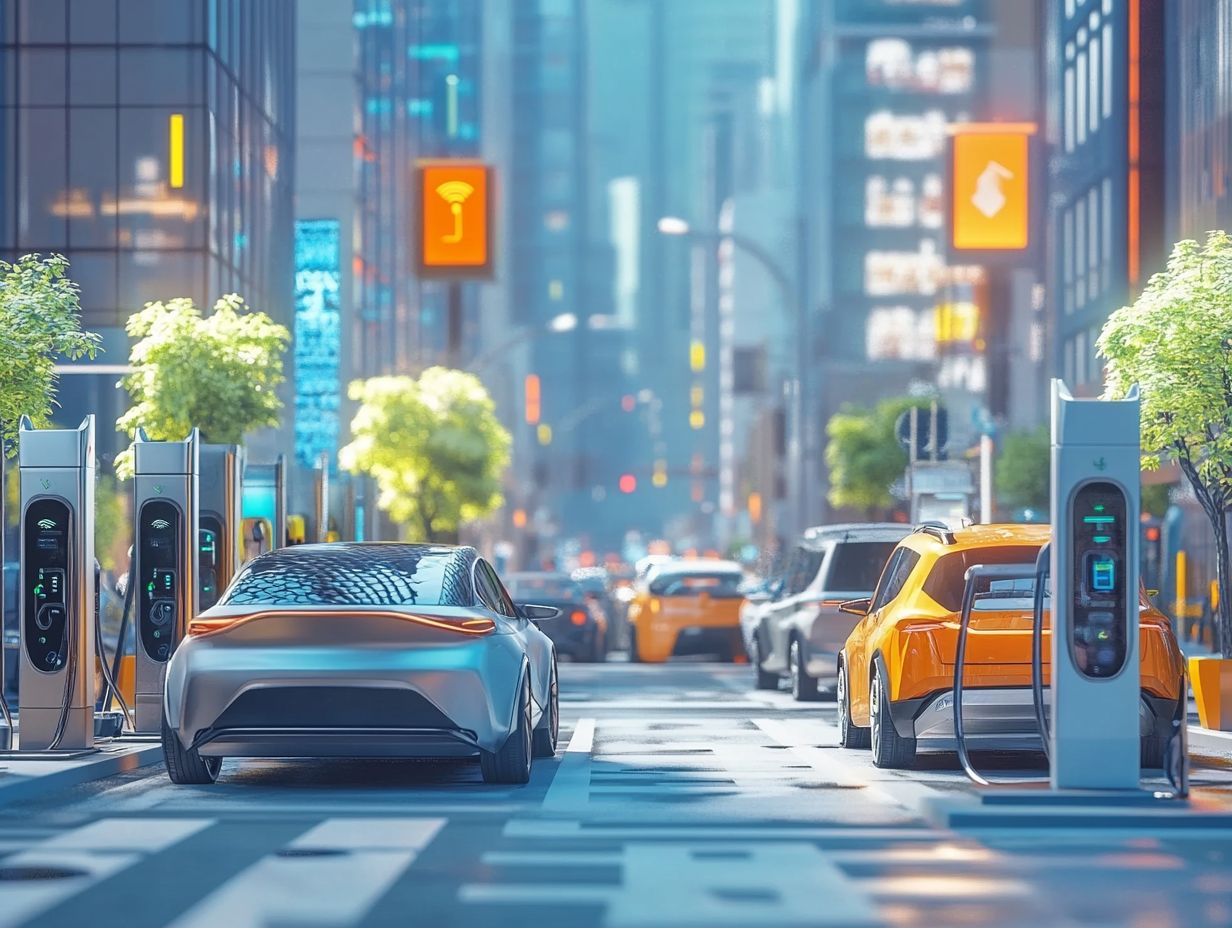
- Electric vehicles (EVs) are essential for smart cities, reducing emissions and promoting sustainability.
- While infrastructure and charging pose challenges, innovative policies are being put in place.
- Successful case studies show that EVs are vital to the future of smart cities.
How Electric Vehicles Transform Smart Cities
The integration of Electric Vehicles (EVs) in Smart Cities signifies a transformative leap toward a sustainable future in urban living.
It harnesses digital technology to elevate the quality of life for residents. By championing eco-friendly transportation options, municipalities can significantly diminish greenhouse gas emissions, improve mobility, and foster groundbreaking smart city initiatives.
EVs are not just vehicles; they are vital tools for collecting data and generating actionable insights, enabling city planners to make informed decisions about urban sustainability and transportation expenses, including understanding how EVs reduce carbon footprint.
Overview of Smart Cities and Their Goals
Smart Cities are cutting-edge urban areas that harness advanced digital technology to elevate quality of life, stimulate economic growth, and champion sustainable development all while tackling the challenges of urbanization.
These visionary urban environments are designed to enhance public services, optimize transportation, and bolster safety through connected services that work together. By prioritizing sustainable energy management, Smart Cities strive to minimize their carbon footprints, a critical step in the fight against climate change.
Smart appliances and smart meters help you monitor and manage energy use efficiently. The National Institute of Standards and Technology has been instrumental in shaping the frameworks for these initiatives, establishing standards that encourage innovation and collaboration.
This digital transformation enriches urban living and fosters a more engaged citizenry, paving the way for a brighter, more resilient future.
Why EVs Are Key to Smart Cities Success
The advantages of Electric Vehicles (EVs) in Smart Cities are diverse and compelling. They offer substantial environmental benefits, contribute to greater urban sustainability, and enhance transportation efficiency, as explored in how EVs are shaping urban mobility, in ways that can transform urban living.
Environmental Impact and Sustainability
Electric Vehicles (EVs) play a crucial role in reducing CO2 emissions and fostering environmental benefits, as highlighted in the role of EVs in reducing carbon emissions, establishing themselves as a cornerstone of sustainable mobility in Smart Cities.
These vehicles not only contribute to cleaner air by minimizing harmful pollutants but also significantly reduce sound pollution, creating quieter urban environments that enhance quality of life.
By embracing the transition to EVs, you lessen your dependence on fossil fuels an essential move toward achieving energy independence and nurturing a green economy.
When you integrate clean energy sources like solar and wind into the charging infrastructure, you amplify the sustainability of EVs. This harmonious relationship between electric mobility and renewable energy is key to advancing urban sustainability, allowing cities to transform into cleaner, more livable spaces for generations to come.
Efficiency and Cost Savings
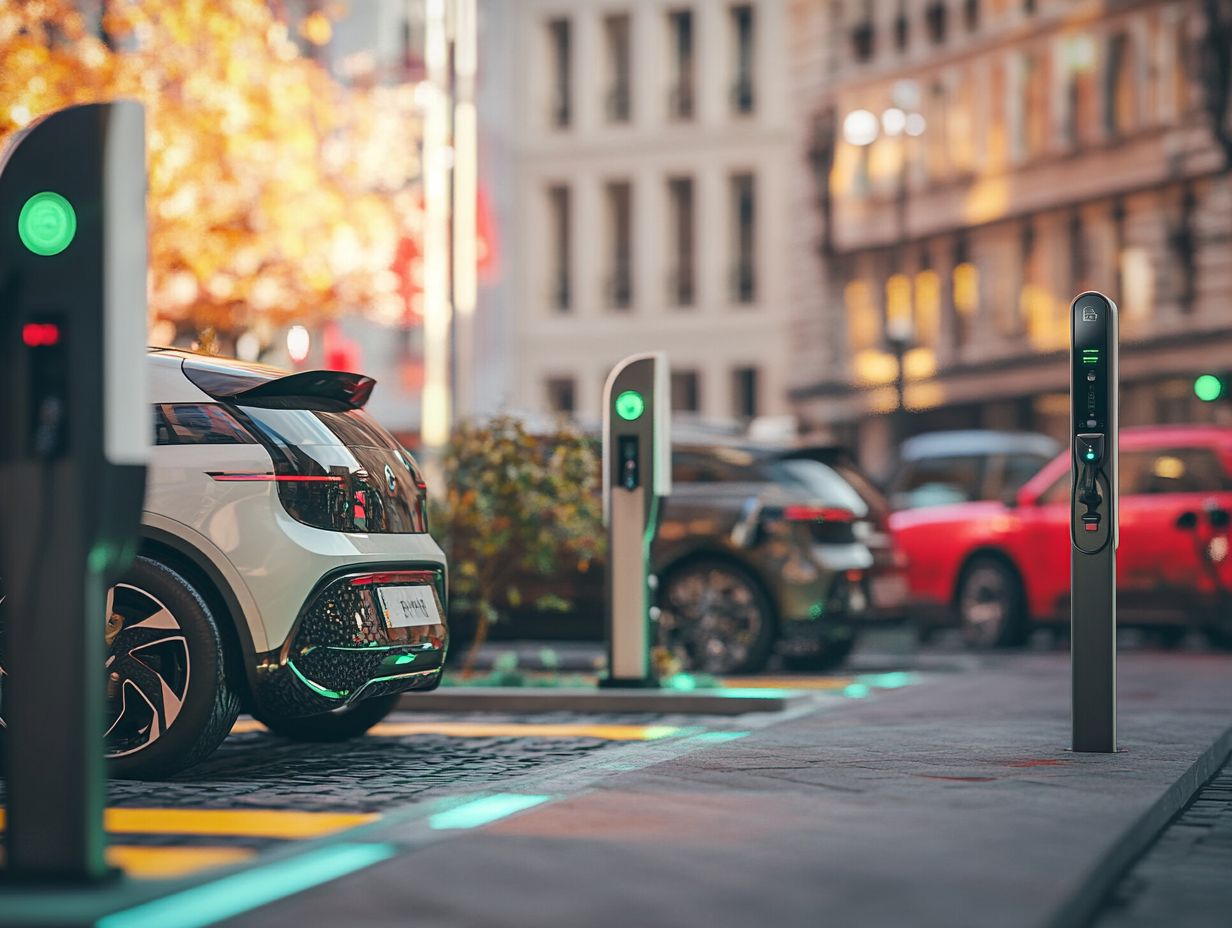
Incorporating Electric Vehicles (EVs) into urban transportation systems significantly enhances your efficiency while leading to cost savings for both municipalities and users.
By opting for these greener alternatives, cities not only elevate air quality but also optimize operating costs tied to fuel and maintenance. Deploying fleet vehicles powered by EVs can substantially reduce overall transportation costs, making public transit more accessible and attractive to you.
The integration of renewable energy sources, like solar and wind power, highlights the potential for a sustainable charging infrastructure. This innovative approach not only meets the charging needs of electric fleets but also lessens environmental impact.
This paves the way for a cleaner, more efficient public transportation landscape that benefits everyone.
Challenges and Solutions for Implementing EVs in Smart Cities
The adoption of Electric Vehicles (EVs) in Smart Cities presents a wealth of advantages. Yet, it also brings forth substantial challenges that require your attention.
Key issues related to infrastructure, charging logistics, and regulatory policies must be carefully navigated to fully realize the potential of this transformative technology.
Infrastructure and Charging Concerns
Infrastructure and charging concerns are among the key barriers to widespread EV adoption in Smart Cities. Robust solutions and strategic planning are essential for you.
This challenge highlights the pressing need for a comprehensive charging infrastructure that not only meets your growing demand for electric vehicles but also integrates seamlessly with existing energy systems.
Managed charging is key to making the most of our energy use, allowing you to optimize energy use and enhance grid stability during peak times.
Vehicle-to-Grid (V2G) systems present innovative pathways for managing energy resources efficiently, enabling your EVs to return surplus energy to the grid. These advancements can foster a balanced ecosystem where the benefits of EV adoption extend beyond mere transportation, positively impacting overall energy sustainability.
Policy and Regulation Changes
Policy and regulation changes are essential for creating an environment that promotes EV adoption and integrates sustainable energy practices within Smart Cities.
This transformation requires an exciting strategy that goes beyond just implementing incentives for zero-emission vehicles. It necessitates a collaborative effort involving various stakeholders.
Engaging with government entities, such as the U.S. Department of Transportation, can pave the way for establishing robust infrastructure and policy frameworks that facilitate seamless EV integration.
Advocating for subsidies and tax credits for consumers, alongside funding for electric charging stations, seeks to drive widespread adoption. Strong regulations and supportive policies can set the stage for a cleaner, more efficient transportation ecosystem, ultimately shaping the future of urban mobility.
Examples of EVs in Smart Cities
Numerous cities are at the forefront of EV integration, showcasing innovative smart city initiatives that set a benchmark for others to emulate.
Case Studies and Success Stories
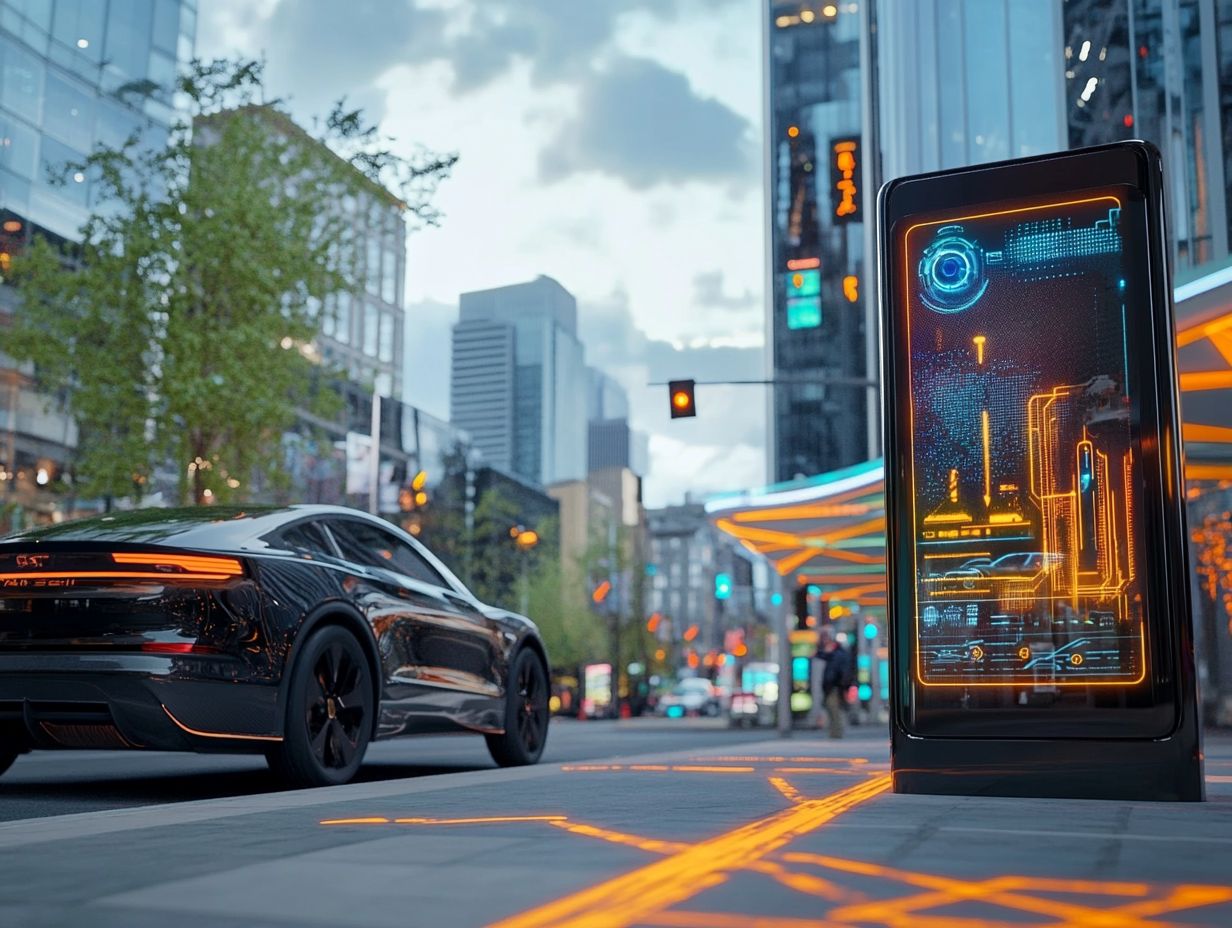
Case studies and success stories from various Smart Cities vividly illustrate how Electric Vehicles (EVs) drive sustainability and enhance urban mobility.
Take Fort Collins, Colorado. The city has invested significantly in a comprehensive charging network for both public and private EVs. This initiative has not only reduced greenhouse gas emissions but also boosted local businesses near charging stations.
In New York City, an ambitious plan is underway to electrify the entire bus fleet. This showcases how adopting electric public transport can lead to cleaner air and better public health for all.
Similarly, Sacramento, California, has rolled out incentives for EV ownership, encouraging a shift away from fossil fuels and fostering a vibrant economy focused on green technology.
These initiatives improve transportation options and lay the groundwork for sustainable urban development, transforming our cities for the better.
The Future of EVs in Smart Cities
The future of Electric Vehicles (EVs) in Smart Cities looks promising and full of possibilities, with numerous predictions and advancements, including insights on how EV technology is evolving, paving the way for a more sustainable and connected transportation system.
Predictions and Potential Developments
Predictions about the role of Electric Vehicles (EVs) in Smart Cities suggest a significant shift toward electric bicycles and a greater embrace of Vehicle-to-Grid integration, which connects EVs to the power grid for energy sharing.
This transition highlights the need for efficient battery storage solutions and shows the potential for a more connected urban mobility ecosystem. With expanded charging infrastructure and the integration of smart grid technologies, seamless connections between EVs and the broader energy network will soon become a reality.
Innovations like autonomous driving and intelligent traffic management systems will likely enhance these advancements, leading to smoother traffic flows and reduced congestion. As cities aim for sustainability, these developments could improve public transportation options and air quality, crafting a cleaner, greener urban environment for everyone.
Frequently Asked Questions
How are EVs contributing to smart cities?
EVs help smart cities by reducing air pollution, cutting traffic jams, and promoting energy-efficient travel.
What role do EVs play in reducing air pollution in smart cities?
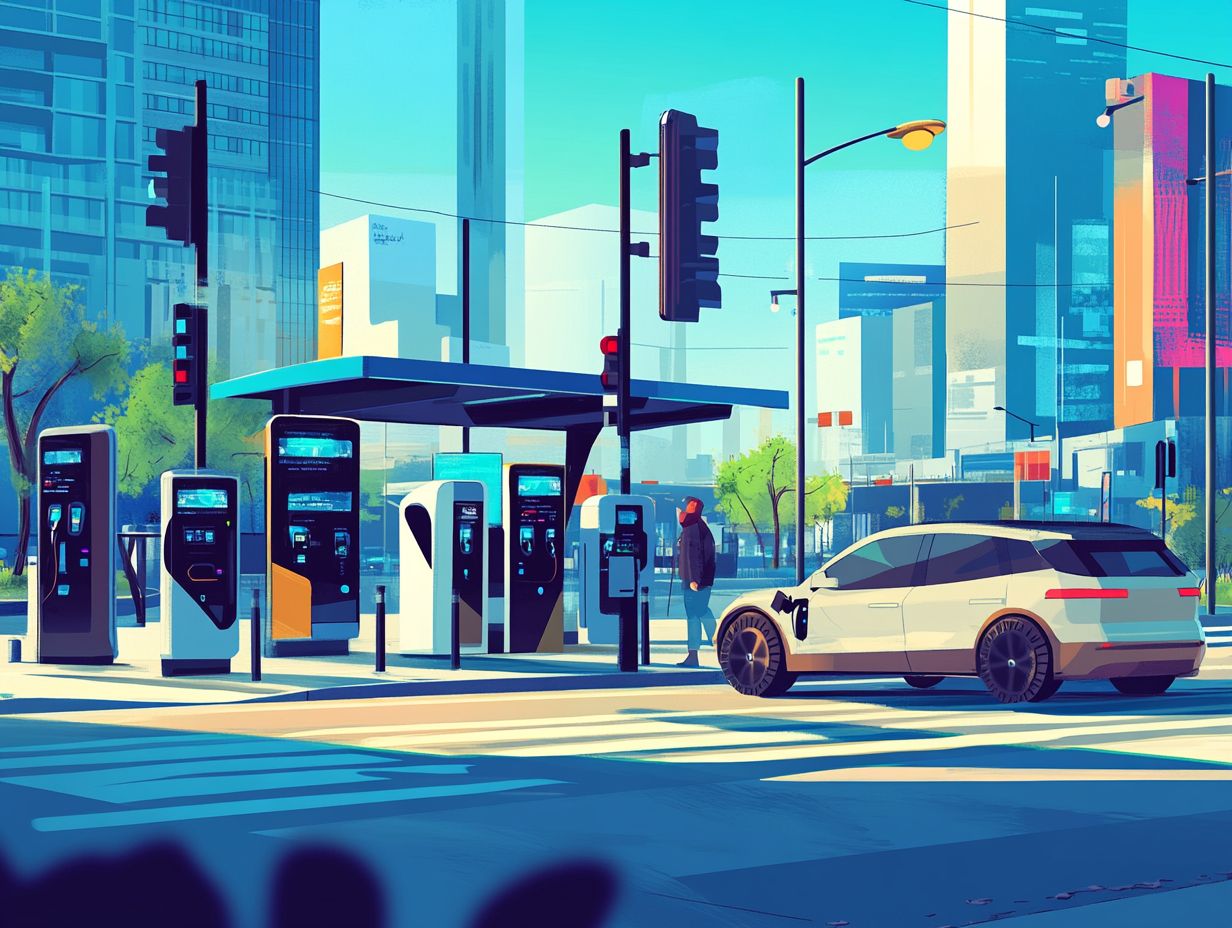
EVs produce zero emissions, unlike traditional gasoline-powered cars. Replacing gasoline cars with EVs can significantly reduce air pollution and improve air quality for residents.
How do EVs help in decreasing traffic congestion in smart cities?
EVs can reduce traffic congestion by using smart charging and routing algorithms. These algorithms optimize the charging and routing of EVs, cutting down on time and energy wasted in traffic jams, and are pivotal to understanding the future of electric vehicles in sustainable cities.
Are EVs cost-effective for smart cities?
While the initial cost of purchasing an EV may be higher than a traditional car, the long-term savings are significant. EVs have lower operating and maintenance costs, making them a more cost-effective option for smart cities over time.
What is the impact of EVs on the power grid in smart cities?
EVs can provide energy storage capabilities, helping to balance the power grid and reduce the need for costly upgrades. This also assists smart cities in transitioning to renewable energy sources more seamlessly.
How do EVs promote sustainable transportation in smart cities?
EVs are powered by electricity, which can be generated from renewable sources. By promoting the use of EVs, smart cities can lessen their reliance on fossil fuels and encourage clean energy usage in sustainable transportation options for their residents.

